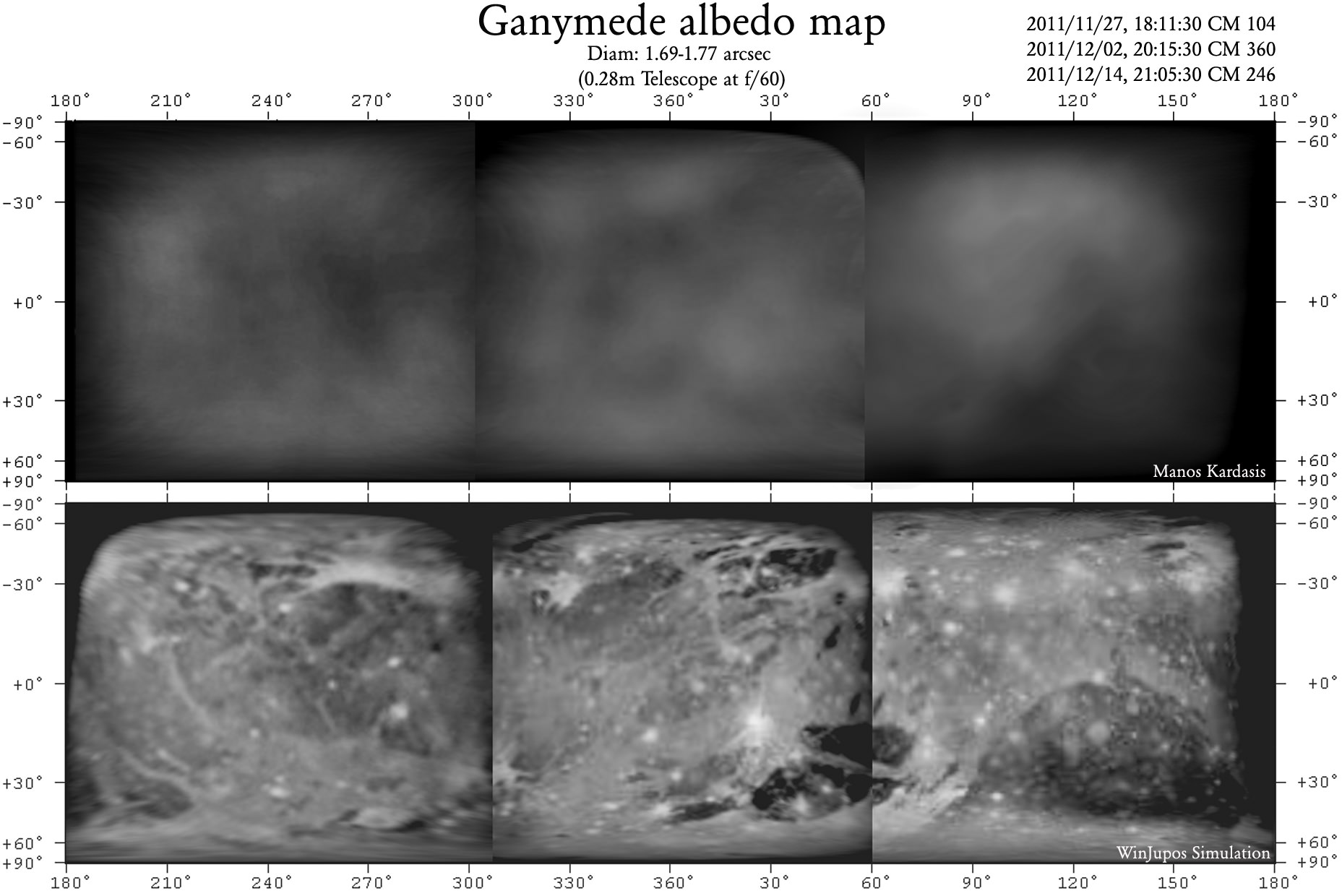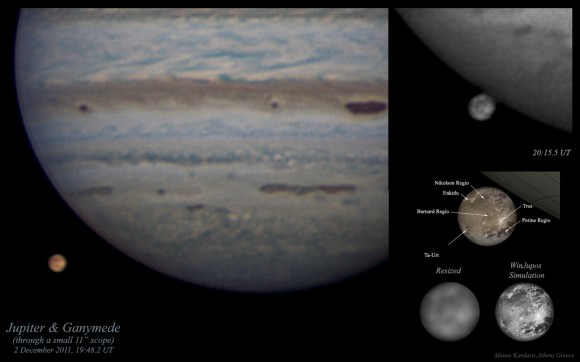The original observations (top) and interpretations (bottom) of the first ever amateur albedo map of Ganymede. Credit: Manos Kardasis.
As our frequent “Astrophoto” posts from amateur astronomers and photographers attest – as well as the rise of citizen science — , the latest technology allows amatuers to make significant contributions to the field of astronomy. Case in point: Emmanuel I. Kardasis of the Hellenic Amateur Astronomy Association has produced the first amateur albedo map of Jupiter’s moon Ganymede. He used an off-the-shelf telescope, camera and computer equipment, but put his experienced observing skills to the test.
“Ganymede has a tiny disk as seen from Earth so was a good test for my techniques,” said Kardasis. “If the same methods were applied to other worlds, perhaps the volcanic moon Io, we could capture surface fluctuations. Professional observatories may create better images but they cannot monitor our rapidly and ever-changing Universe.”
Albedo maps of Ganymede (left) and how they relate to known surface features (right). Credit: Manos Kardasis.
Like many amateurs, Kardasis attached a camera to his telescope and recorded a video of Ganymede. Selecting only the sharpest frames of the video allowed him to obtain a series of images when the atmospheric conditions – known as ‘seeing’ – were most favorable. These best images were then stacked and aligned, before being enhanced through photo-editing software.
An albedo map details higher areas of reflectivity on an object’s surface recording where material is brighter or darker. Kardasis’ albedo map closely aligns with professional images of Ganymede’s surface, indicating features such as Phrygia Sulcus (furrows and ridges 3,700 km across) and the Nicholson region (a low-lying darker area).
Amateur photographs of Jupiter and Ganymede, accompanied with a professionally-obtained labeled map (bottom right). Credit: Manos Kardasis.
“Creating useful images of planets requires a telescope with a diameter of at least eight inches, said Kardasis. “For tiny discs, such as the moons of Jupiter, bigger is definitely better. My Ganymede images were made using an 11-inch telescope. You also need a good motor drive on your tripod, a sensitive camera, some freely-available software, and lots of patience!”
Kardasis presented his images at the European Planetary Science Congress this week in Madrid, Spain. He suggests that future amateur programs could monitor both surface and atmospheric changes on worlds as varied as Uranus, Neptune and Titan, complementing more detailed but far less regular observations made by professionals. Kardasis says, “I hope my work will inspire anyone interested in astronomy to use whatever equipment they have to make useful observations.”
Source: EPSC




THAT is some truly inspirational work! I LIKE!
Those are some beyond amazing images of Ganymede!
It continues to astound me what is capable with “off the shelf” equipment. I’ve tried some planetary imaging using video and it is not as easy as these images make it seem. Fantastic stuff.